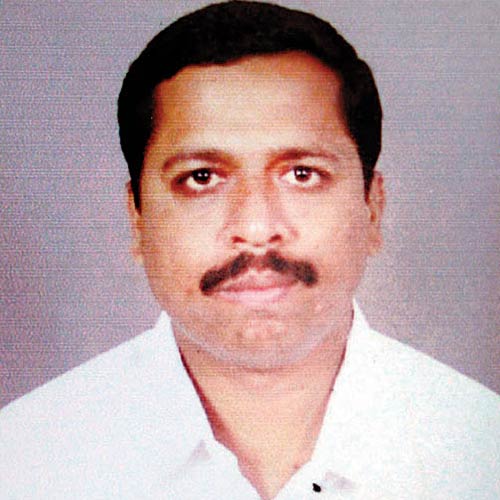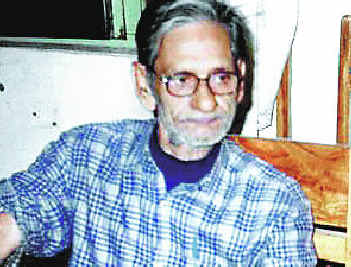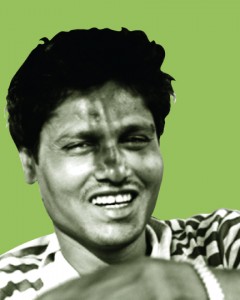HardNewsMedia Report:
The widespread corruption in the flagship scheme of the UPA government, NREGA, is hidden from none. Social audits conducted by civil society groups and individuals have proved the existence of corrupt practices being followed by the district administration of various states. These social audits are threatening the people who have been brazenly siphoning off funds from public schemes for decades. Consequently, this public accountability in grassroots democracy is turning out to be dangerous for those directly involved in exposing irregularities in the scheme. That is, those who want the NREGA to be a success.
On May 15, a mutilated body (eyes gouged out and face smashed) was found near the Kanda forest in Palamu district of Jharkhand. The body was that of Lalit Mehta, secretary of Vikas Sahyog Kendra, an NGO that has been actively working on the right to food and NREGA schemes. He blew the whistle on widespread corruption in the scheme in Palamu.
 |
| Kameshwar Yadav |
Lalit Mehta was last seen on May 14 with Jean Dreze, well known economist, former member of the National Advisory Council headed by Sonia Gandhi, and one of the architects of NREGA. He was seen in the small town of Daltoganj. He left in the evening for Chatarpur in Jharkhand. His dead body was later recovered by the adjoining Bishrampur Police Station.
Some people who live near the spot saw a man being beaten by a group. One man in Silda village went to check his well at night since he thought that the body might have been dumped there. No arrests have been made till date. Instead, the district administration has implicated Jean Dreze in its report. Activists claim that this is a brazen attempt to protect the criminals.
The report mentions that Robert, Lalit's brother-in-law, was aggressive and violent and always opposed his marriage with his sister. The report states that the other motive of the murder could have been the huge money transactions that took place at Vikas Sahyog Kendra. "This is totally baseless as it has been 10 years since Lalit has been married. So the Robert angle never arises. As far as money is concerned, Lalit has not paid his rent for months, his LIC policy has expired and his bank account has only Rs 800," says Jawahar Mehta, an activist who worked closely with the activist.
"The report shows that the police have made no serious enquiries into Lalit Mehta's murder. It does not provide any credible clue to this murder, but raises a number of mischievous conjectures using selective evidence. For instance, the report refers to interviews with Lalit Mehta's brother and his sons, without mentioning that the sons are one and three years old, respectively. Meanwhile, evidence from extensive interviews with Lalit's wife, Ashrita, is ignored. Further, the report is full of factual mistakes.
Even the date of the murder is incorrect: Lalit Mehta was murdered on May 14, not on May 15, as stated in the report," said Aruna Roy, Arundhati Roy, Prabhash Joshi, Harsh Mander, among other eminent activists, writers and journalists, in a statement.
Locals in Jharkhand complain of an entrenched nexus of politicians, contractors and district officials. They believe that Lalit was murdered so that no one would dare to enter these areas to conduct a social audit. Jean Dreze and Balram (NREGA advisor to the food commissioner appointed by the Supreme Court of India) in a joint statement said, "If this murder was an act to intimidation, it did not succeed. Friends and supporters from all over Jharkhand gathered at Vikas Sahyog Kendra and unanimously resolved to continue the campaign against corruption and exploitation in the area."
After facing pressure from various quarters, the state government, after more than a month of the murder, ordered a CBI probe. But the case has not yet reached the Public Grievances Cell which will take a call on it and then pass it on to the Central Vigilance Committee, which will then forward it to the CBI. Then, it's up to the CBI to take the case.
The high profile Arushi murder case was taken over by an ‘active CBI' in 24 hours after the UP government's request, but no one knows how much time the CBI would take in Jharkhand. The case has been transferred to the CBI, but the local CID is reportedly still interfering. Said NBA's Medha Patkar: "They must get to the bottom of the case. This is not only the responsibility of the Jharkhand government, but also that of the Centre. This is a central scheme."
However, in Jharkhand, the circle of murders continues. Kameshwar Yadav, a prominent NREGA activist of Khatauri village, Deori Block in Giridih district, was shot dead by unidentified gunmen in June 7. Yadav was a member of the CPI-ML (Liberation), an overground organisation working with the poor. He was involved in exposing the corrupt role of contractors and middlemen. He relentlessly highlighted irregularities in the NREGS and mobilised landless labourers and job-seekers for implementation of the scheme. The district administration has arrested two individuals, but the case has not been cracked.
The Congress-RJD backed coalition in Jharkhand seems rather non-committal, even while NREGA is the UPA's baby. Tek Lal Mahto, JMM MP in Giridh, told : "I am not aware of any of these murders as I am not involved in any of the NREGA work. I am aware of the high level corruption among senior government officials in my constituency. I have also raised this issue in Parliament."
In recent past, several such incidents have occurred in different parts of the country where social audits are being conducted. Members of these teams are warned, physically threatened, provoked and sometimes brutally beaten up. Recalling the violence in Jhalawar, Rajasthan, Aruna Roy, member of the Centre's Employment Guarantee Council, said, "When we went to do social audit in Jhalawar, we were chased away. Someone even tied a noose around the neck of one of the women. If a little force would have been used, she too would have died."
- See more at: http://www.hardnewsmedia.com/2008/07/2264#sthash.WSQ7KKuj.dpuf














